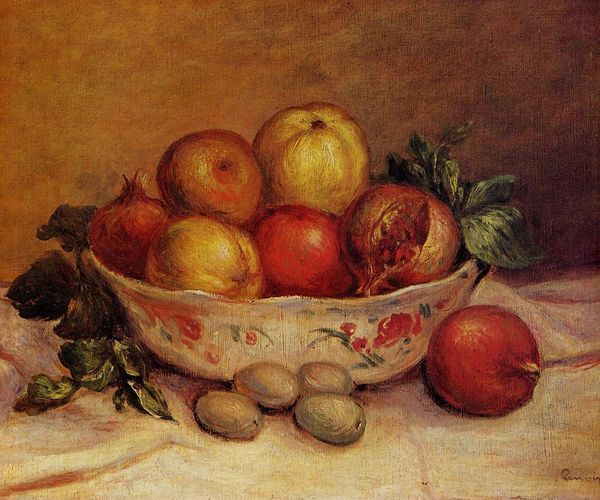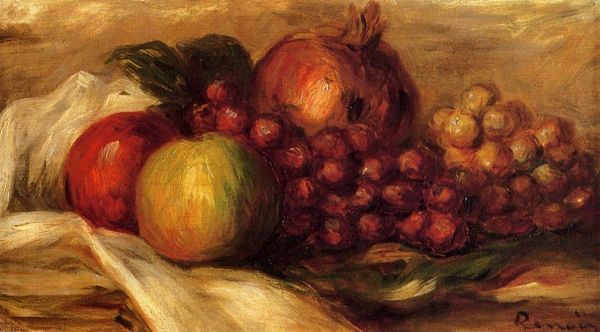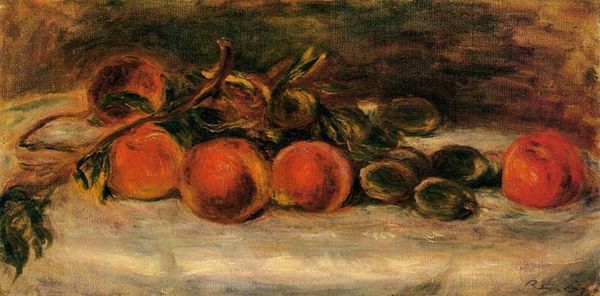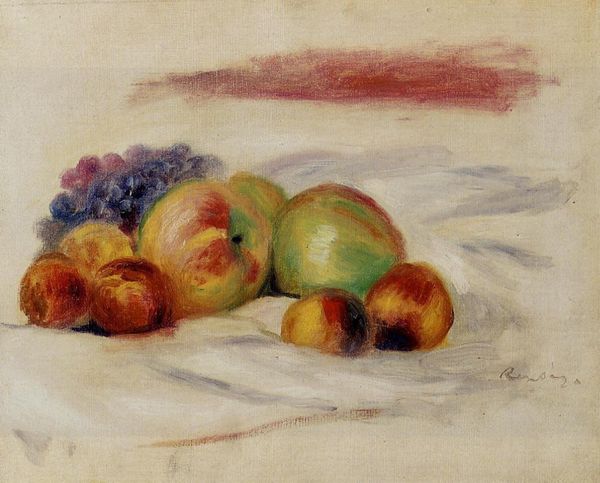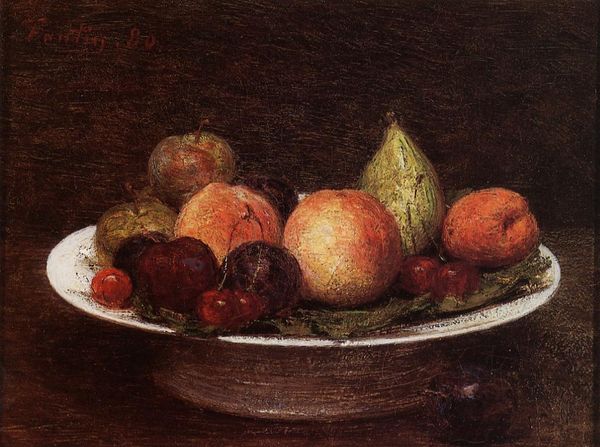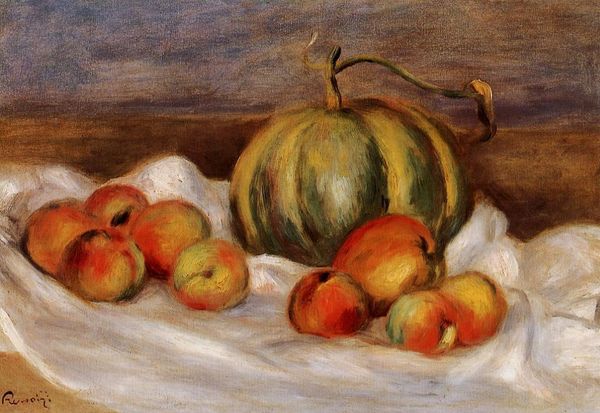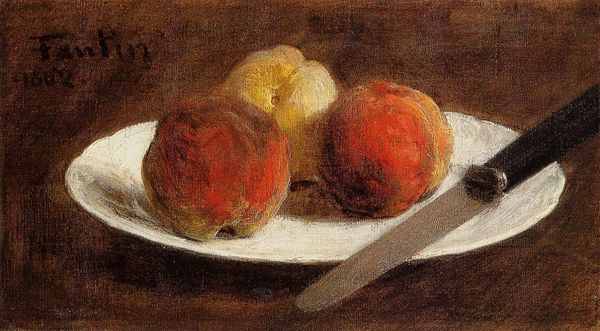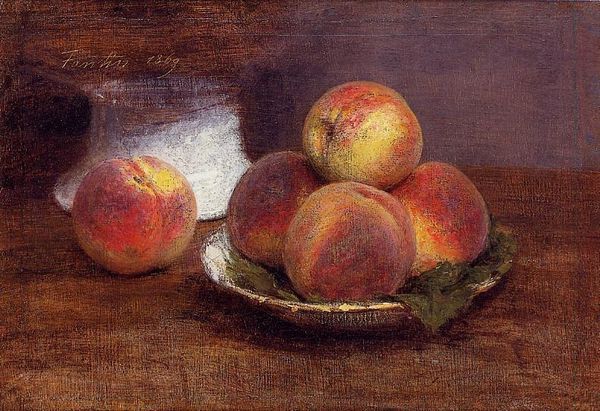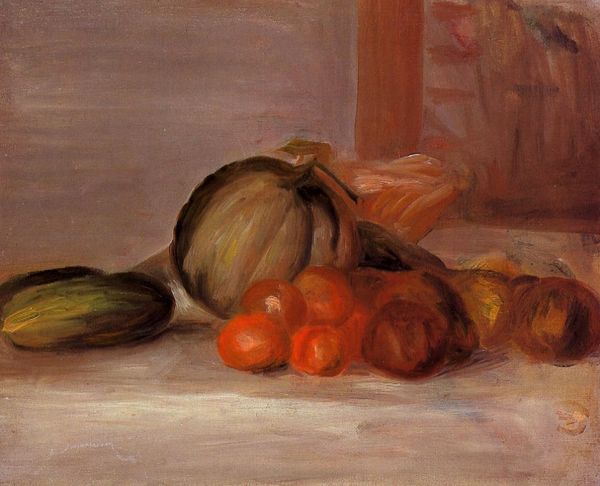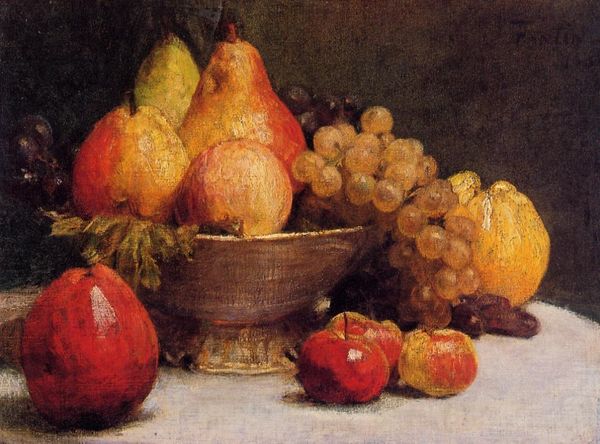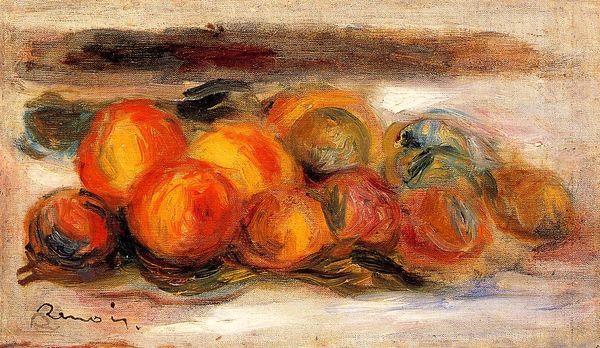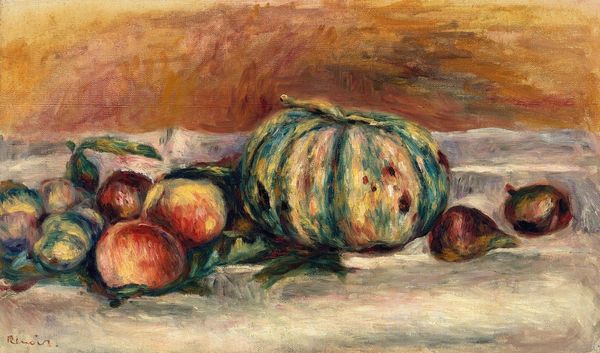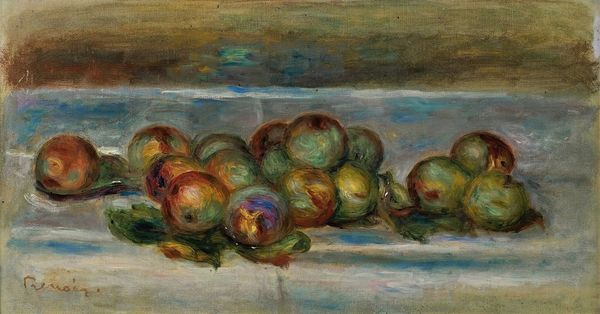
oil-paint, impasto
#
still-life
#
impressionism
#
oil-paint
#
oil painting
#
impasto
Copyright: Public domain
Editor: So here we have Renoir’s *Still Life with Fruit*, made with oil paint and, from what I can see, using an impasto technique. It feels very grounded and domestic. What stands out to you as you look at it? Curator: The subdued palette invites us to think about the availability of resources and power relations during Renoir’s time. How might this humble display contrast with the opulent displays commissioned by wealthier patrons? Who gets represented, and how? Editor: That’s interesting, I hadn’t thought of it that way. It's so different from the ostentatious still lifes of the Dutch Masters. The visible brushstrokes feel more about capturing a fleeting impression than depicting material wealth. Curator: Exactly! And if we consider Impressionism's radical shift towards depicting everyday life, we can question why certain aspects of the everyday get represented and valorized. Were there different expectations based on gender in painting? What would you say if a female artist created the work? Editor: Perhaps that she had limited access to models. This feels like a safe subject for an artist without as many opportunities or connections. Curator: Or that the feminine eye is drawn to the inherent value of nurturing in simple food? The perspective from which we approach this work brings our own cultural understanding and bias to it. How would someone from another century respond to this image and its narrative? Editor: This makes me wonder, does a seemingly straightforward painting like this hold layers of meaning just waiting to be uncovered by examining the socioeconomic environment of its production? I'm now finding myself interested in Impressionist representations of class! Curator: Precisely. And the exploration never ends; critical examination lets us challenge traditional art history!
Comments
No comments
Be the first to comment and join the conversation on the ultimate creative platform.
